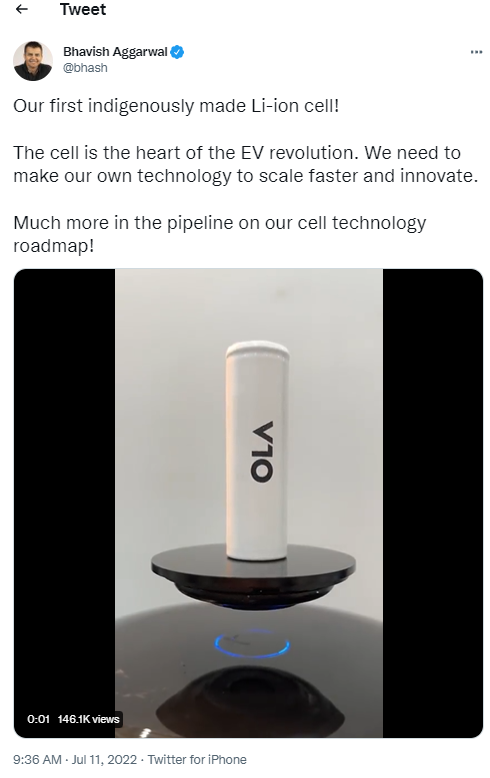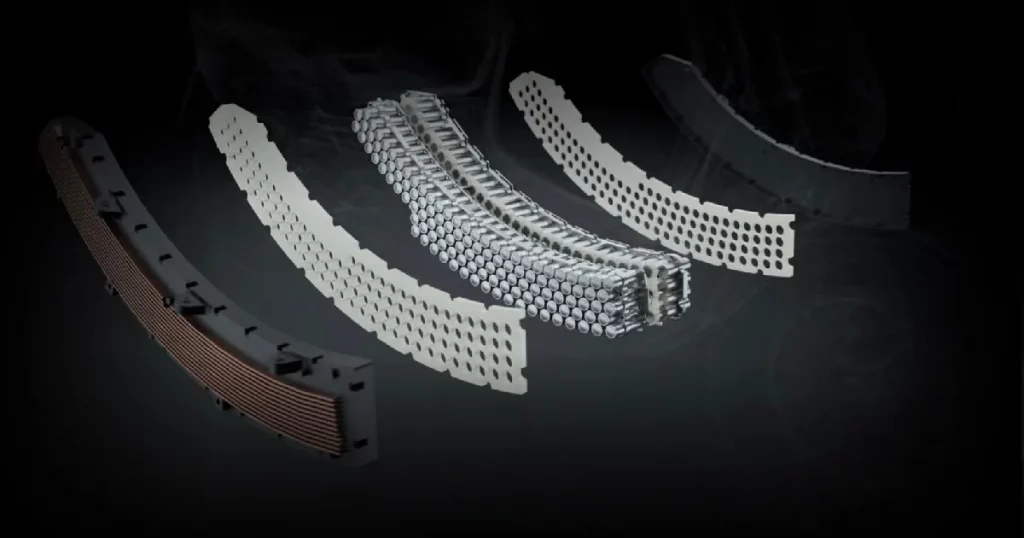Ola Electric CEO Bhavish Aggarwal disclosed that the company is developing its own battery cell, and there will be more in the future. The CEO recently initiated a discussion regarding the company’s goals in the battery technology sector by tweeting a clip of an Ola-branded cell. The battery pack’s specifications have not yet been made public. However, if the business adopts a strategy akin to Tesla, Ola cells might be comparable to those used in its current Ola S1 Pro e-scooter.

Notably, the Ola S1 Pro now has a 3.97 kWh battery, which, according to the company, enables the scooter to travel 180 km on a single charge. Riders have recently reported that with the MoveOS 2.0 upgrade, they were able to ride in Eco mode for 300 km on a single charge.
The battery cell is the first one that the company has created on its own. The CEO claims that the business has a lot more to offer in terms of battery technology.
Currently, LG Chem Korea is the supplier of the 3.97kWh battery pack used by Ola Electric. The 224 cell components in this battery pack are NMC cells (Lithium-Nickel-Manganese-Cobalt-oxide). This is done in two cell sets totaling 112 units. Additional parts, including connecting buses and a variety of sensors to measure, analyze, and carry out various operations, are also included in the full battery pack.
It is now known that Ola Electric may be evaluating ways to carry out the development and manufacturing operations internally. This may enable the business to control production costs, avoid problems with the supply chain, and better manage innovation and long-term growth. It is even possible to connect this fact to Ola Electric’s long-standing desire to create a Lithium Iron Phosphate (LFP) battery cell for its budget-friendly scooter. Notably, LFP cells are stable and less expensive to produce. The stability of the cells would be a feature that Ola is longing for, citing the recent Ola S1 Pro E-scooters fire incidents.
The Ola battery’s specifics, including its energy density, energy capacity, and battery chemistry, are still a mystery. However, it’s feasible that the business begins by developing licensed battery technology internally before expanding to newer and alternative technologies.
RELATED








